Global Sea Logistics: Major Ports and Emerging Trends in Sea Transport
The sea industry plays a crucial and active role in global trade and logistics. The United Nations Conference on Trade and Development reports that more than 11 billion tons of goods are transported annually. With the current global population, this equates to an astonishing 1.5 tons per individual.
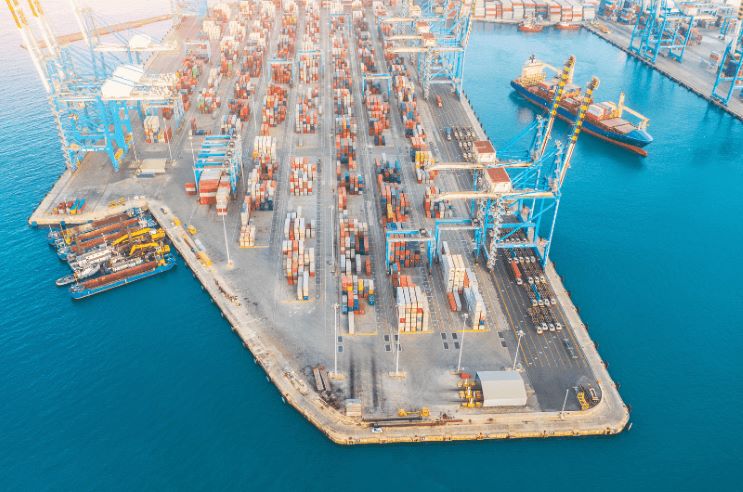
Source: www.canva.com
Ports play a vital role in enabling the movement of goods across international boundaries, as most global trade relies on sea routes. In this analysis, we explore the world’s largest cargo ports, provide insights into the latest trends in sea transport, and examine emerging patterns in global shipping logistics.
World’s Biggest Cargo Ports
The world’s prominent 20 ports collectively managed 382.8 million TEUs in 2022, according to Lloyd’s List. Here are a few examples:
1. Shanghai, China (47.3 million Twenty-Foot Equivalent Units)
Shanghai’s port consistently handles immense amounts of cargo, solidifying its position as the top container port in the world. Strategically situated along the Yangtze River, it enjoys direct access to China’s industrial heartland. The port’s growth aligns with China’s economic expansion, efficiently overseeing vast trade movements both within the country and globally.
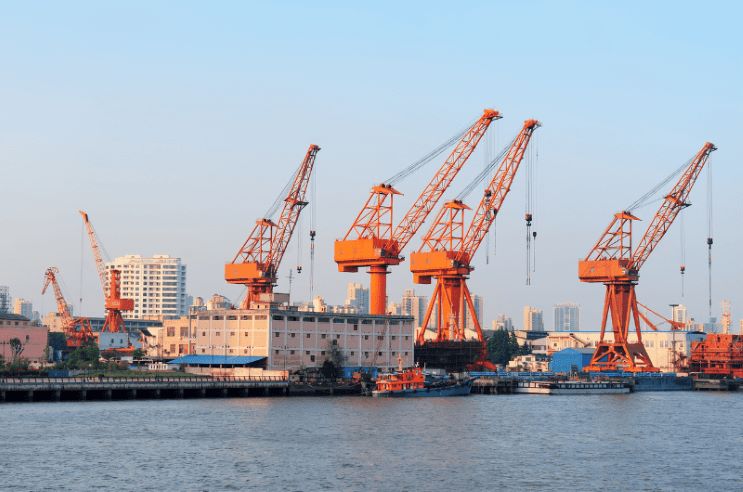
Source: www.canva.com
2. Singapore (37.2 Million Twenty-Foot Equivalent Units)
The world’s second-industrious cargo port is situated in Singapore, often referred to as the “Lion City.” This sea giant defines key transportation routes, offering unparalleled integration. It has become a global cargo exchange point, facilitating the movement of goods across the world due to its cutting-edge foundation and its functional efficiency.

Source: www.canva.com
3. Ningbo-Zhoushan, China (33.3 Million Twenty-Foot Equivalent Units)
Two ports that joined forces to secure the third spot on the ranking are the Ningbo and Zhoushan ports. Their strategic position within the Yangtze River Delta and their nearness to Shanghai have contributed to their importance. Zhoushan and Ningbo exemplify China’s commitment to enhancing and advancing its sea trade foundation.
4. Shenzhen, China (30 Million Twenty-Foot Equivalent Units)
The fourth most industrious port is situated in Shenzhen, highlighting China’s swift rise to economic prominence. Shenzhen, home to gateways such as Yantian and Shekou, caters to the requirements for shipping out goods from the country’s manufacturing hub. Its quick growth underscores China’s strength in transport.
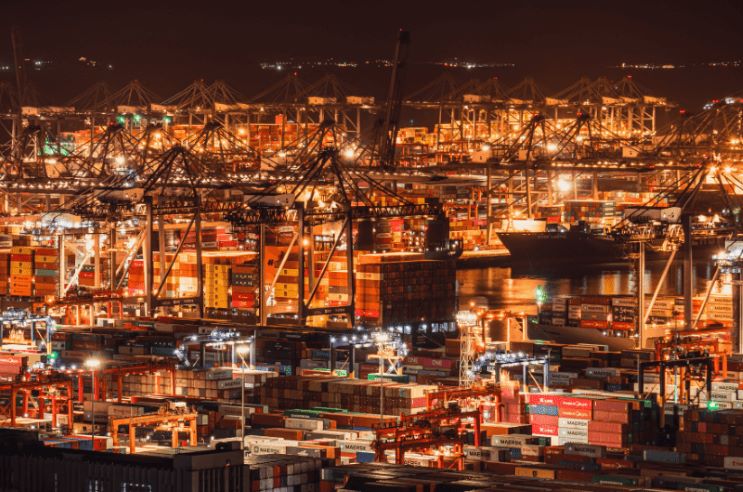
Source: www.canva.com
5. Qingdao, China (25.6 Million Twenty-Foot Equivalent Units)
Qingdao, a port situated on China’s eastern shore, functions as a central point for global commerce. Its state-of-the-art infrastructure and efficient management enable it to manage substantial volumes of cargo. On a worldwide scale, Qingdao is crucial in the international exchange of products.
Solidifying its status as a dominant force in sea trade, China’s numerous ports consistently rank it at the forefront of global shipping container throughput rankings. By leveraging cutting-edge technology, China sustains its global leadership, enhances logistics, and boosts economic competitiveness. Additionally, the country has capitalized on its industrial know-how by systematically positioning ports by key freight routes, turning them into vibrant centers that manage vast amounts of products.
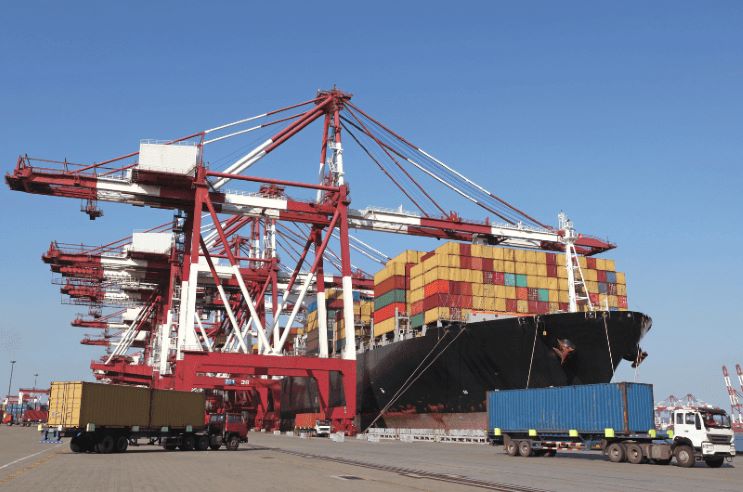
Source: www.canva.com
10. Rotterdam, Netherlands (14.4 Million Twenty-Foot Equivalent Units)
Rotterdam, a port in the Netherlands is number ten in the rankings, breaking the dominance of Asian ports. As Europe’s largest port, Rotterdam is a central trade hub for the continent. Its cutting-edge infrastructure and strategic location make it a favored gateway for goods making their way into Europe.
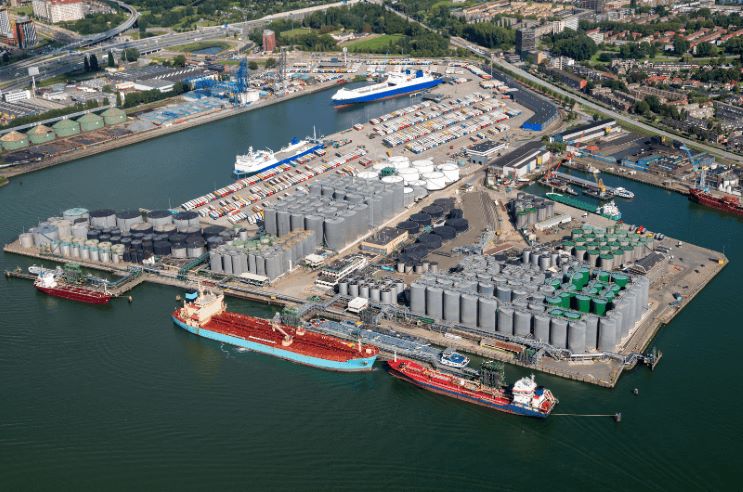
Source: www.canva.com
11. Dubai, UAE (13.9 Million Twenty-Foot Equivalent Units)
The Port of Jebel Ali in Dubai ranked as the 11th busiest container port globally, serves as the Middle East’s gateway to international trade. Its strategic position at the crossroads of Europe, Asia, and Africa reflects Dubai’s ambition to establish itself as a central hub for trade and logistics.

Source: www.canva.com
12. Antwerp, Belgium (13.5 Million Twenty-Foot Equivalent Units)
The ranking of Antwerp’s port as 12th highlights the importance of European commerce. Situated in Belgium, this port serves as a vital gateway between Europe and the global market.
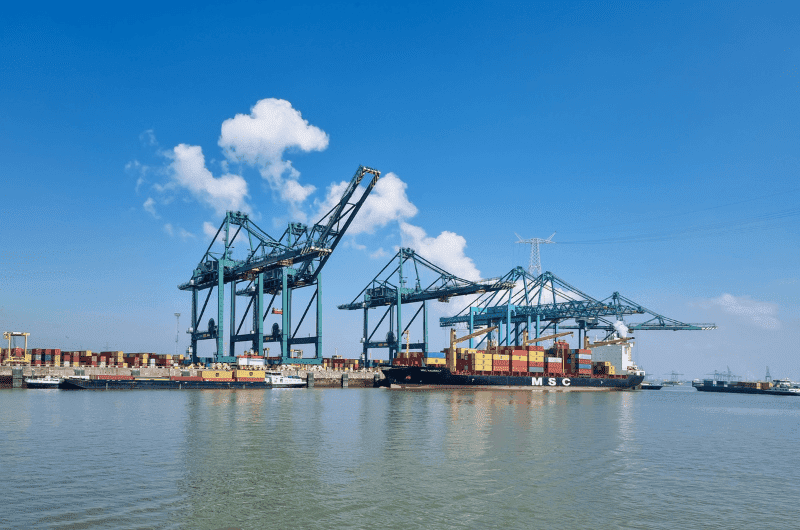
Source: www.canva.com
16. Los Angeles, California, USA (9.9 Million Twenty-Foot Equivalent Units)
The Port of Los Angeles, the largest port in the United States, holds the 16th spot globally. As a key player in trans-Pacific trade, it handles a significant portion of the U.S. cargo coming from Asia. Its importance in global sea logistics is enhanced by its upgraded infrastructure and proximity to crucial markets.
Cargo is transported across all ports using vessels capable of holding up to 24,346 twenty-foot equivalent units. Discover more about the largest cargo ships navigating the world’s oceans. Let’s also explore the current trends influencing the industry.
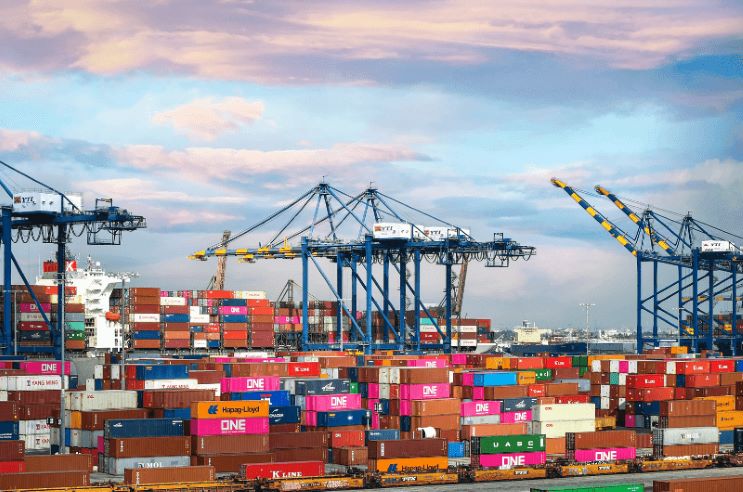
Source: www.canva.com
Four emerging trends in sea logistics
In the rapidly evolving field of global sea logistics, several groundbreaking factors are reshaping the industry. These developments are driven by technological innovations, environmental considerations, and shifting customer expectations. These forces are fortifying supply chains, boosting sustainability, enhancing clarity, and revolutionizing the way goods are transported across oceans to stay aligned with the swiftly changing global economy.
In a previous article, we explored six key trends influencing logistics on a worldwide scale. These significant trends are steering the sea logistics sector towards a future characterized by enhanced efficiency, reduced environmental footprint, and greater adaptability to the demands of the 21st-century worldwide economy.
1. Broadening the scope of the green and blue economies
The greenhouse gas emissions from worldwide sea fleets are heading in the opposite direction of where they should be. Between 2012 and 2022, these emissions rose by 23%, with general cargo, dry bulk, and container vessels contributing the most to this increase.
The green and blue economies are grounded in sustainability, but they focus on different aspects of environmental and economic development.
Green Economy: Green economy trends seek to mitigate harmful impacts on the planet and combat climate change by restructuring the global economy to prioritize these goals.
Integrating renewable energy sources, reducing fossil fuel energy consumption, and integrating a no-waste approach in industrial processes wherever feasible are essential actions toward building a low-carbon economy.
A study conducted by CE Delft shows that by implementing 5–10% zero or near-zero emission fuels, wind-assist technologies, and optimizing ship speed for climate benefits, vessels can cut emissions by 36-47% compared to 2008 levels by the year 2030.
If you’re interested in becoming more environmentally friendly without relying on cargo ships, learn how to achieve it here.
Blue economy: The blue economy focuses on the sustainable growth of sea and coastal ecosystems. Its primary goal is to maintain the health and biodiversity of oceans, seas, and coastlines while enhancing their economic potential.
Blue Economy: An essential aspect of the blue economy involves adopting greener fuels, implementing emission control measures, and utilizing energy-efficient technologies to minimize the carbon footprint of cargo transportation. Actions as such help to decrease air pollution, cut down on fuel consumption, and mitigate the effects of transport on climate change and ocean ecosystems.
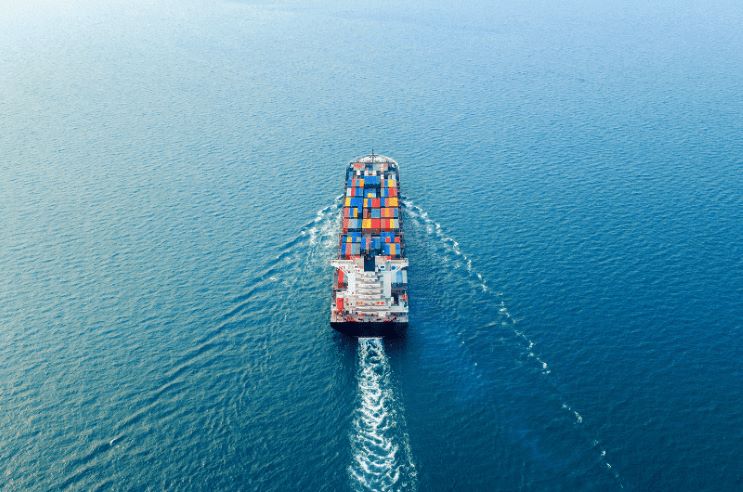
Source: www.canva.com
2. Utilization of self-operating vessels
Within the cargo transport industry, sea autonomous surface ships are driving a transformative shift. Advancements as such aim to reduce labor expenses, enhance safety, and optimize navigation.
Automation plays a crucial role in enhancing safety by decreasing the chances of human error and accidents caused by tiredness. Advanced systems are capable of continuously tracking a ship’s operations, weather conditions, and navigational information, making adjustments as necessary to provide safer and more pleasant journeys. Additionally, automation aids in refining route planning and navigation by taking into account factors such as traffic, weather, and fuel consumption.
Although self-driving ships can operate independently of human oversight, automation includes processes such as managing cargo and operating powertrains, which could revolutionize cargo logistics in the future.
An illustration is the Yara Birkeland, a Norwegian container vessel from Yara Company. This ship is the world’s first fully electric, emission-free, and autonomous container ship. By using this vessel, Yara aims to remove 40,000 yearly trips previously made by diesel trucks transporting goods.
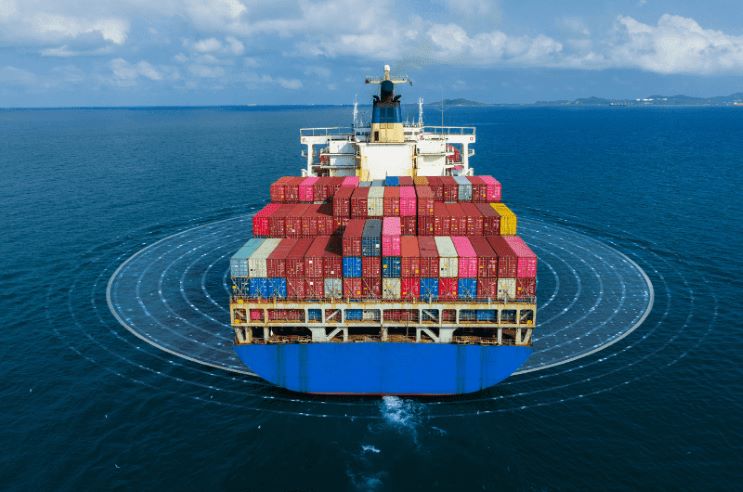
Source: www.canva.com
3. Digital Transformation and the Internet of Things (IoT)
The management and operation of ships are evolving with the smooth incorporation of digital technologies. IoT sensors and interconnected systems offer current data on a ship’s performance.
Sensors such as these play a crucial role in collecting data from the physical world, which is then transmitted to IoT systems or devices for further processing, analysis, and decision-making. IoT sensors come in different types and are utilized in numerous scenarios to gather information about surroundings, objects, and processes.
IoT sensors installed on vessels provide real-time execution monitoring. These devices collect data on various elements such as temperature, engine performance, fuel usage, and cargo status. The extensive data gathered enables proactive maintenance, allowing ship operators to address potential issues before they escalate. Furthermore, it enhances fuel efficiency, reducing the environmental footprint of sea transport.
The ability to locate containers has seen advancements in both precision and clarity. As we move further into the digital era, this technological shift enhances operational efficiency and reduces idle time. Additionally, it cuts expenses, making sea transportation more cost-effective and environmentally friendly. Discover the top 5 online container locating systems.
4. Enhancing the robustness of the supply chain
The global effects of COVID-19 have provided a powerful lesson on the importance of developing dependable and robust supply chains. This has led to a fundamental reassessment of logistical strategies, emphasizing a renewed emphasis on preventive measures and comprehensive eventuality planning.
Diversifying suppliers is an essential strategy for enhancing supply chain robustness. Companies can mitigate the risk of interruptions by distributing their dependency from a single source of vital components or materials to several sources. This approach involves identifying and nurturing alternative suppliers, both locally and globally, to create a more reliable and flexible supply network.
A key activity for assessing and boosting supply chain adaptability is stress testing. By simulating disruptions and crises, companies can identify pitfalls and weak points within their supply chains. This process helps develop plans to maintain operations and minimize disruptions during unexpected events, as well as refine eventuality tactics.
Producing locally is increasingly favored as a method to enhance resilience. By relocating operations nearer to key customers or strategically placing manufacturing sites, businesses can reduce their dependence on distant suppliers. This approach not only boosts the ability to adapt to shifts in supply and demand but also minimizes shipping-related risks.
To enhance the supply chain’s flexibility, integrative systems are proving to be more beneficial. By creating partnerships with suppliers, logistics providers, and even competitors, organizations can bring together assets and share what they know. This collaborative approach enables a more interconnected and streamlined response during disruptions.
These changes will keep shaping the way goods are transported across seas and how commerce is conducted as we move forward. In this future, sea logistics will not only drive economic growth but also be essential in safeguarding the environment of our planet.
Businesses are progressively acknowledging the value of self-sufficiency in the way they function. A major advancement toward a more eco-friendly future involves embracing cutting-edge solutions, such as the EasyCargo software. This intuitive tool enhances cargo loading proficiency by optimizing container space and minimizing the necessity for additional transports. Additionally, companies can significantly lower their carbon emissions, contributing to a healthier environment and cleaner air.




